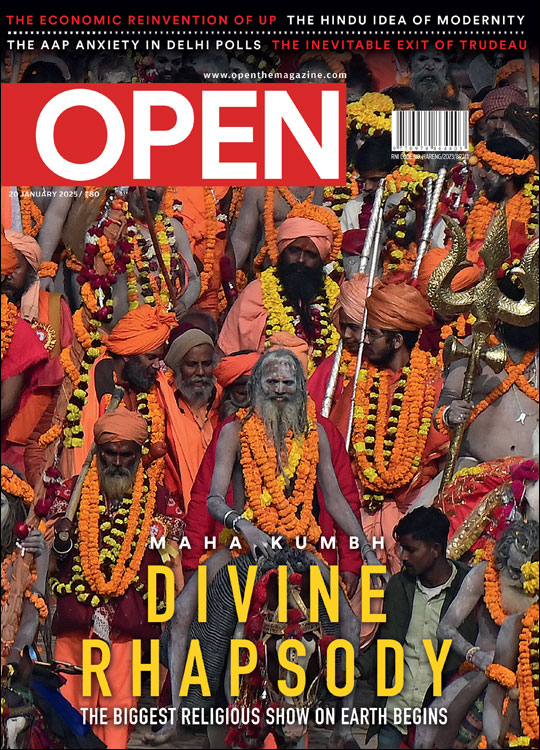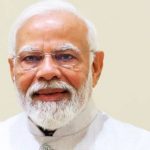An Object of Derision
Tavleen Singh in her new book should have allowed a bit of sunlight between perception and reality
 Srinath Raghavan
Srinath Raghavan
 Srinath Raghavan
|
11 May, 2016
Srinath Raghavan
|
11 May, 2016
/wp-content/uploads/2016/05/Anobject1.jpg)
‘THE PERSONAL IS political,’ was the famous credo of the New Left in the late 1960s. Tavleen Singh seems to embrace it—but with a twist. While the youthful radicals of that generation sought to link their subjective experiences with wider political structures, Singh reduces all politics to her personal condition. She strikes the leitmotif of her new book upfront: ‘Bad things happened in my life and to people in my life under Sonia Gandhi’s reign.’ The enforcement directorate raided her house; the government put a halt to the Lavasa township being constructed by her partner’s firm; friends in the Congress party were asked to cut her off; her column in The Indian Express was sought to be muzzled: all under the express instructions of Sonia Gandhi, who apparently harbours deep and obsessive rancour against Singh.
By the evidence of this book, though, the obsession seems to run the other way round. Readers of Singh’s columns will know of her regular and predictable broadsides against Mrs Gandhi and her family. But to spend the bulk of a 400- page book inveighing against an individual, however powerful or depraved, seems a bit much. To her credit, Singh makes it obvious that her beef with Mrs Gandhi is almost entirely personal. She detests the fact that a naturalised citizen should have wielded such authority in India. Everything else—the perpetuation of dynastic politics or ostensibly ‘socialist’ economic policies—are but products of this original sin. Just in case this sounds xenophobic, she assures us that even Indira Gandhi ‘would have been truly appalled that her Italian daughter-in-law should be taking her job as leader of India.’
A diatribe on this Mahlerian scale may well be music to the converted who hearken unto her columns every week. But the rest of us may care a bit more about such inconveniences as facts. Consider this claim. Suman Dubey, a confidant of Mrs Gandhi, writes Singh, ‘rang Shekhar Gupta and told him that he should shut down my column. I heard this not from Shekhar, who kept completely silent about this until he left the Express. I heard from friends whom Sumi [Suman Dubey] talked to.’ Later she adds, ‘After Shekhar Gupta resigned from the editorship of The Indian Express he told me she had personally asked him to stop my column on the grounds of what I wrote against her.’ As it happens, Gupta has indeed spoken up. In a recent column published after this book, he put it bluntly: ‘no such thing happened’. If it didn’t, presumably he never told her such a thing. Evidently Singh has raised hearsay about herself to the level of political commentary.
A CLOSER LOOK AT INDIRA GANDHI’S ‘SOCIALIST’ POLICIES WOULD HAVE SUGGESTED HOW WELL BIG
BUSINESSES DID FROM 1975 ONWARDS. IT IS NO COINCIDENCE THAT MOST INDIAN CAPITALISTS WELCOMED THE EMERGENCY
In fairness, Singh is too honest a journalist to simply make things up. Just that she seems incapable of distinguishing between her perceptions and the reality. Take another example. Sometime in late 2003 or early 2004, Singh found herself in the same room as Mrs Gandhi. When she introduced her partner, Ajit Gulabchand, Mrs Gandhi said, “So you are Tavleen’s partner…God bless you. Tavleen and I have our political differences but underneath that there is friendship.” The author, by her own account, was left ‘speechless’. Nevertheless, some 150 pages on, she reports another ‘conversation’ between Sonia Gandhi and an unnamed Congress functionary:
‘Have you seen what that woman [Ms. Singh] writes about me? Why can’t we do something about her?’
‘Yes, madam. But what?’
‘Well she is living in sin with Ajit Gulabchand and he is building an illegal city in the Western Ghats. Surely we can stop that?’
‘Yes, madam.’
On this occasion, the author is careful enough to append a caveat: ‘It is never possible to verify the truth of these things.’ Much the same can be said about the entire book.
This is a tad unfortunate. For threading through pages of such tittle-tattle is another story: that of her deeply felt concern about the children that teem the streets of Mumbai. In these brisk chapters, Singh comes into her own as a journalist. Here we glimpse her genuine interest in them as individuals as well as her raging anger against a political class whose apathy condemns these children to such an existence. But anger is no substitute for analysis. And no sooner does Singh venture beyond herself than the ground beneath her feet starts quaking.
The history that she holds out is rather more potted than usual. It is also unencumbered by evidence. Nehru’s India, she writes, was ‘makeshift, mediocre and muddling along…the only things that seemed well made and solid were the things the British Raj had left behind.’ The operative word is ‘seemed’, for yet again Singh confuses feelings and facts. Between 1900 and 1945, the Indian economy grew at an average annual rate of less than one per cent. The same figure for the years 1947-1964 is just short of four per cent. Are we really trying to say that Nehru’s India was worse off than the Raj? This is still more curious because Singh frequently condemns our elites for having mortgaged their mind to erstwhile colonial powers.
TO HER CREDIT, SINGH MAKES IT OBVIOUS THAT HER BEEF WITH SONIA GANDHI IS ALMOST ENTIRELY
PERSONAL. SHE DETESTS THE FACT THAT A NATURALISED CITIZEN SHOULD HAVE WIELDED SUCH AUTHORITY IN INDIA
Equally risible is her claim that Nehru adopted a model of ‘democratic feudalism’ (whatever that may mean). Or this: ‘It was many, many decades after his death that Nehru’s policies began to be questioned.’ This statement would have stunned a bevy of Congressmen— never mind opposition leaders like JP and Lohia, Rajaji and Deen Dayal Upadhyaya, Namboodiripad and Ambedkar.
Singh’s understanding of Nehru’s dictatorial daughter is similarly deficient. While she rightly denounces Indira Gandhi’s ‘socialist’ economic policies and her authoritarian turn in the Emergency, she finds it difficult to grasp the sources of her hold on the people. Incapable of analysing what she can’t abide, Singh falls back to a supercilious elitism of her own: ‘most Indians in 1975 were poor, illiterate and politically naïve.’ She is also outraged that ‘even though [Indira Gandhi’s] licence raj almost killed India’s tiny private sector, rich Indians worshipped her.’
A closer look at Indira Gandhi’s supposedly ‘socialist’ policies would have suggested how well big businesses did from 1975 onwards. It is no coincidence that most Indian capitalists welcomed the Emergency. Her policies during this period and in her final term from 1980 were her lasting economic legacy. Here lay the origins of our model of crony capitalism—a phenomenon whose very existence has been denied by Singh in print. Instead, she contrasts Indira Gandhi’s economic record with that of Deng Xiaoping under whom China ‘became a capitalist country and soon overtook India in almost every way’. The comparison would have been more plausible had she spared a couple of words more for the man who is rightly known as the Butcher of Beijing.
As we read on, it becomes clear that Singh has a healthy distrust of the lower orders of Indian society. The book is peppered with sneers about the ‘semi- literate’ poor who rejoice in the crumbs of welfare held out by successive Congress governments. Too bad they can’t read English or Hindi—else they might have followed Singh’s columns and seen the light. As for the alleged champions of the poor, the less said the better. The beautiful ‘middle class’ dream that was Lavasa was destroyed by an envious cabal led by Medha Patkar: her ‘activism was spurious and self-serving… her hysterics worrying… there was something contrived about her straggly hair, her crumpled blouse with its sweat stains under the armpits and her cheap cotton saris.’
Singh regards the causes espoused by the likes of Patkar as beneath contempt. Thus she nods in deep agreement with bureaucrats in Gujarat who tell her that the Forest Rights Act ‘was going to cause incalculable harm to what was left of India’s forests’. Adivasis were heading in droves towards forests, clearing them and claiming the land— ‘even though they never lived in forests or cultivated forest land.’ It would be tough to pack in more credulity or ignorance on this matter in one paragraph. In fact, her grasp of such issues is non-existent. The Integrated Child Development Scheme, she writes, has not benefited even a single child that she knows in Mumbai. Such claims, as the great physicist Wolfgang Pauli said, are not even wrong. And to the extent that Singh has any economic ideas of her own for the poor, they can be easily summarised: Let them eat cake.
By contrast, her anger against ‘hereditary democracy’ is well-founded. Then too, her excoriation of the Congress would have had more bite had she paused to gaze out of India. After all, dynastic politics is by no means a unique feature of India, or even South Asia. China and Japan, North and South Korea, Philippines and Taiwan, Indonesia and Singapore: all have leaders whose parents have previously ruled their countries. If Singh had bothered to ask why family structures matter so much in Asian politics, she might have had something more interesting to say about the situation in India. Or, perhaps, our problem is actually that we have been saddled with the Nehru-Gandhis instead of the Lees and the Parks who delivered much higher levels of prosperity to their countries—even if it was done under a prolonged bout of authoritarian rule.
Singh seems to pick up most of her impression of the Indian economy from Davos. ‘It was in 2006 in Davos,’ she writes, ‘that the first signs of the India story coming to an end began to become evident.’ This epiphany was perhaps a bit too early. She later concedes that UPA’s victory in 2009 was largely due to the fact the Prime Minister Manmohan Singh ‘had kept the economy running on all cylinders.’ What she cannot get herself to acknowledge is the irony that during these years the Indian economy at once grew faster than ever before and stored up the problems that would come back to haunt it.
Interestingly, Singh blames Prime Minister Vajpayee for not decisively breaking with Nehruvian socialism. In a venomous chapter, she flays him for having settled into the Congress’ model of governance (again, whatever that might be). No sooner had Vajpayee been sworn-in than he ‘began to behave just like Congress prime ministers had.’ This doughty and experienced politician, who had spent nearly five decades jousting with the Congress, was apparently too much in awe of the Nehru-Gandhi dynasty to dispense with its legacy.
Now Singh reposes her faith in Prime Minister Modi. But here too a sceptical, Davos-inflected note is sounded: ‘he has taken small steps in the right direction but moved more slowly than he should have’. This is India’s only real chance to start afresh. If the Prime Minister squanders this opportunity, then ‘democratic feudalism and decayed socialism’ will remain our collective destiny.
Tavleen Singh’s India is the night in which all cows are black. If she allowed a bit of daylight between reality and her perceptions, her reading of the state of the nation might be a little more plausible. But for that she needs to do more than the occasional foray into the countryside from her fastness in the much-despised Lutyens’ Delhi.
(Srinath Raghavan is the author of India’s War: The Making of Modern South Asia, 1939-45)

/wp-content/uploads/2025/01/Cover_Kumbh.jpg)













More Columns
The 90 Hour Work Week Equation Madhavankutty Pillai
The Arctic Great Game Sudeep Paul
Why PM Modi picked Nikhil Kamath for his podcast debut V Shoba